Are you a small business owner who wants to get the most out of your team? If so, you might be thinking about using sprints to manage projects in your business.
Here’s the problem: you’re unsure about what a sprint is, and you’re also uncertain about the best way to manage your team through sprints.
If that’s you, you’ve come to the right place! In this article, we’ll give you a concise summary of everything you need to know about managing sprints in your company. We’ll even throw in a few tool suggestions so that you have the software you need to hit the ground running.
What is a sprint?
A sprint is a short stretch of time in which a team needs to complete a finite list of tasks. The term sprint comes from Scrum, an agile framework for project management.
Although the term “sprint” is often associated with software development, any business, even companies in low-tech industries such as real estate or construction, can divide work up into sprints.
Businesses have good reason to want to split complex projects into smaller sprints. It's much more motivating to knock out a small chunk of a large project over 2–3 weeks than to struggle through a behemoth of a project with no clear end date. As a result, your team will deliver higher-quality work more quickly.
The typical sprint lasts two weeks, but that is not written in stone anywhere.
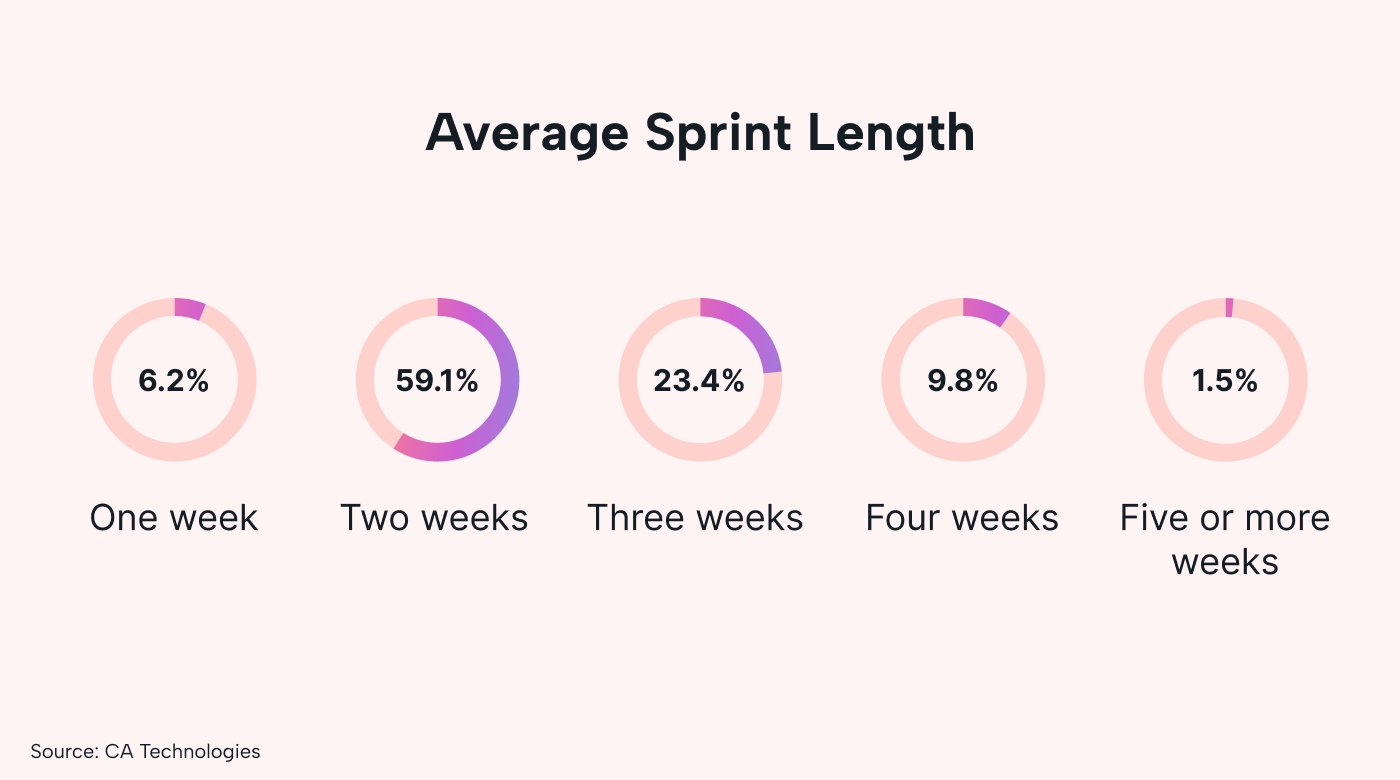 |
Fair warning: More complex projects often require a longer time frame or project lifecycle, which can mean more sprints.
What happens during a sprint?
Before you can start working in sprints, your team should have created a product backlog that lists all the major things that need to be built and done (boringly called “work items”).
To start the sprint planning process, your product owner, the Scrum Master, and the development team must decompose user stories from the product backlog into manageable chunks (tasks). This list of actionable tasks, in turn, becomes the sprint backlog.
Once the sprint backlog is ready, you can assign tasks to your team to work on during the upcoming sprint. Your team will then generally move them through a Kanban board that has columns like “To do,” “Doing,” and “Done.”
Use daily standups to keep your team accountable and ensure work stays on track. In a typical daily scrum meeting, each team member will briefly say what they’ve done in the last 24 hours, state their intentions for the next work day, and outline anything they need help with.
As part of these daily meetings, it’s the Scrum Master’s job to coach the team on agile methodologies and best practices and remove any identified barriers so that the work can flow smoothly.
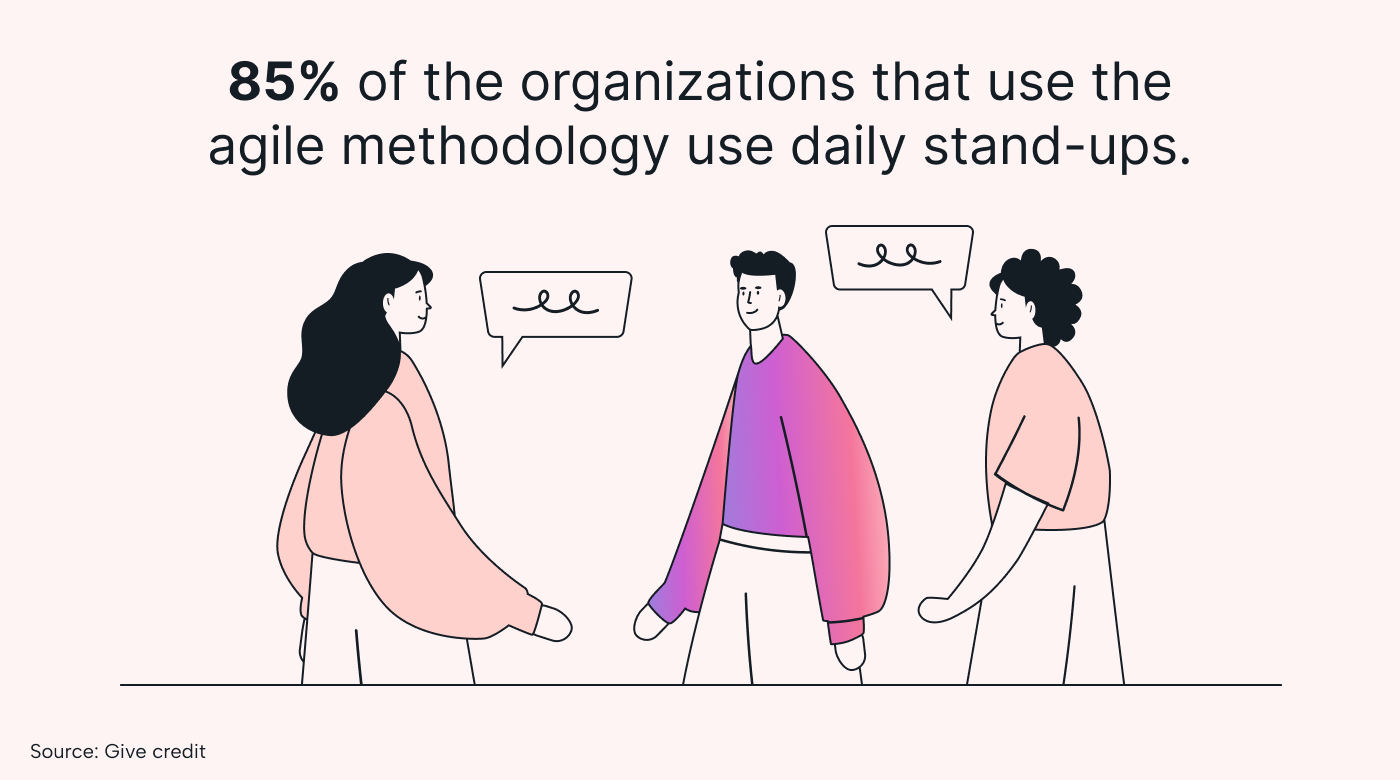 |
Once the work is complete, it's time to deliver the project to your customer and get their feedback. Typically, there'll be a sprint review meeting at this point to review the product or features built in the previous sprint and ensure they meet the customer's needs.
Next, you should have an internal meeting to discuss what went well, what went badly, and where you think you can improve the process going forward. This agile team meeting is called a sprint retrospective.
Once this meeting is done, it's time to start the next sprint cycle. You'll need a new sprint backlog with work pulled from the product backlog.
Although not super complex, there are many moving pieces to the sprint process. That's where the tools come in. They can help you manage the flow of each sprint. Let's take a look at some of the best ones.
Tools for sprint planning
Motion
Motion is an AI calendar app that helps users organize complex projects. By leveraging your information about your deadlines, working hours, and tasks, Motion will automatically plan your day and sync with whatever calendar app you use. It's ideal for teams managing many complex tasks during a sprint.
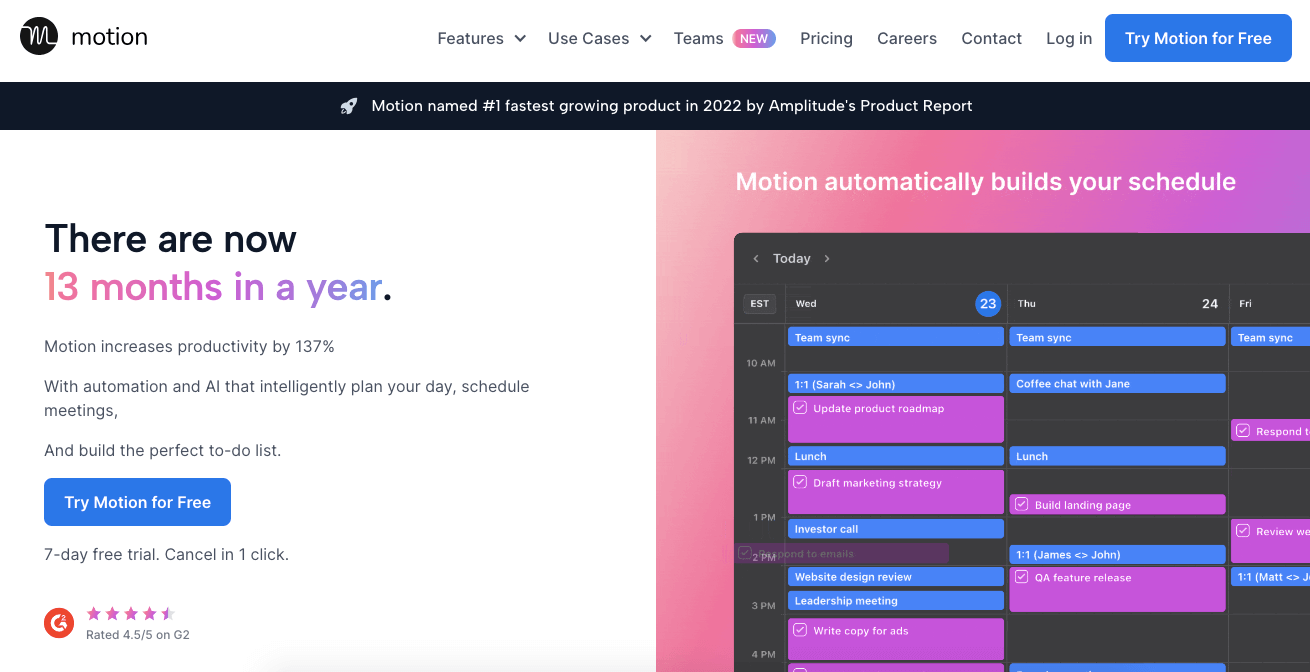 |
Pros: Helps users prioritize tasks using factors such as hard deadlines, soft deadlines, user availability, and urgency level. Color-coded events and a drag-and-drop interface make for easy task management.
Cons: Sub-tasks are limited with no option to add dependencies or priorities.
Good for: Owners of small traditional businesses. For example, if you run a small advertising agency, you might not have much time to learn about project management. Motion will help you get up and running within the hour. It’s intuitive and smart. Any tasks you don’t get done today, Motion will reschedule for you to get done at a later time and add it to your calendar. All you need to do is review your day and ensure your priorities are up to date!
Scrum Mate
Scrum Mate allows teams to manage multiple agile projects in just one team board. Teams can choose their preferred framework and combine all their tasks into one workflow.
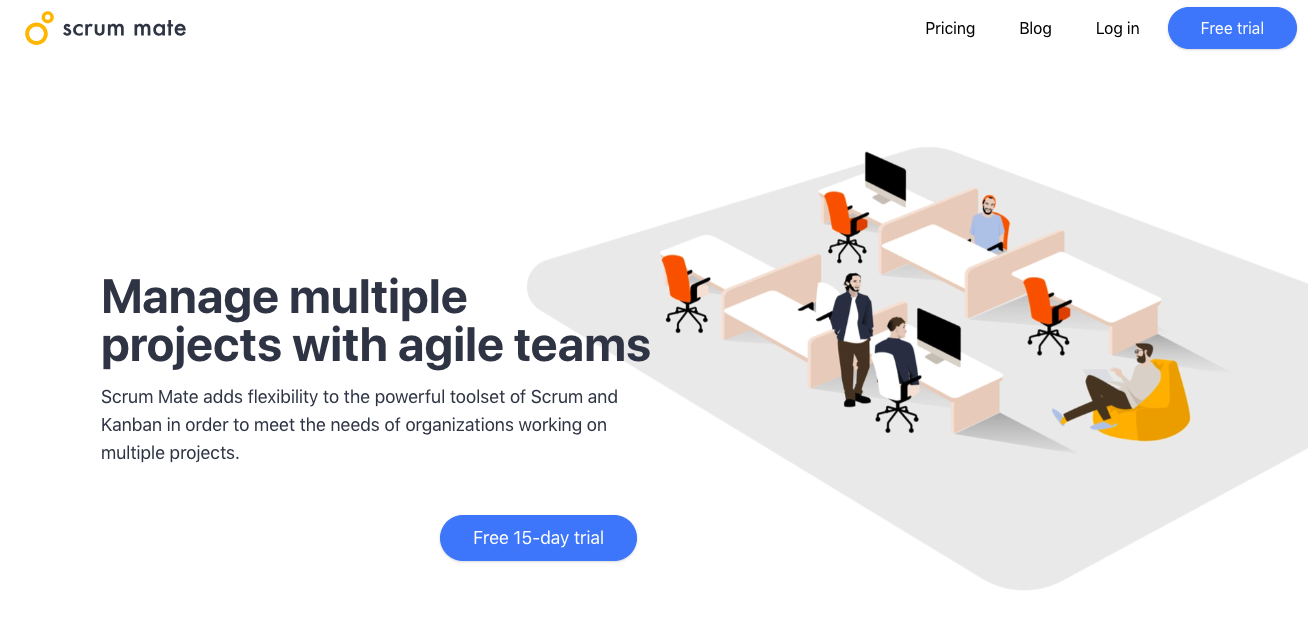 |
Pros: By combining multiple projects onto one board, Scrum Mate makes sprint planning easy. The GitHub integration makes it an especially popular tool with software development teams.
Cons: Scrum Mate doesn't have an Android app.
Good for: Technical Scrum teams, because it's fully compliant with Scrum principles. For example, if you're building an onboarding app with a lot of (technical) features, this could be a good fit.
Sinnaps
Sinnaps is a free project management tool that uses algorithms to calculate the optimal workflow for the projects you’re working on automatically.
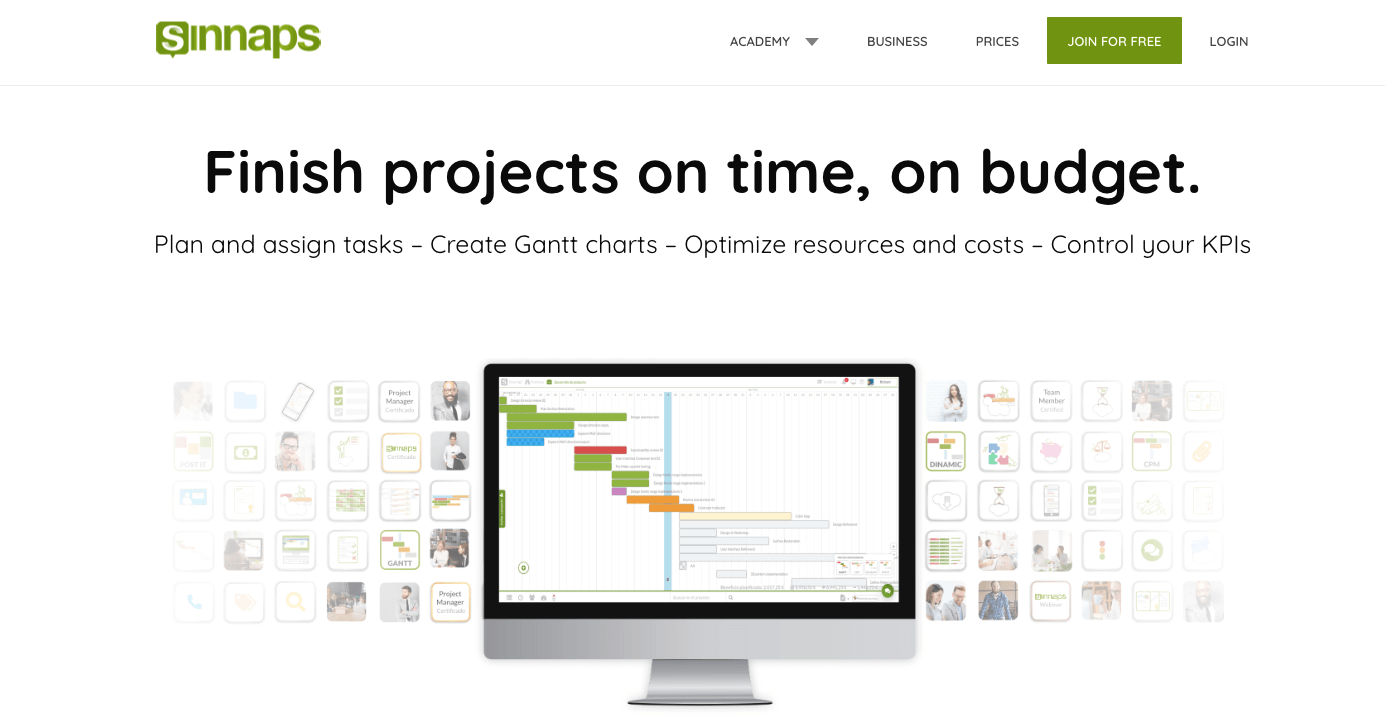 |
Pros: Sinnaps has one of the lowest learning curves of any of the tools in this article. It's completely free to use for up to 10 projects, with up to 20 seats per project. The Gantt chart function is especially intuitive.
Cons: This tool has no integrations whatsoever. While this might not be an issue if you're just starting out with project management, it's definitely a problem for larger teams or more complex projects that need to pass data between the tools in their tech stack.
Good for: Early-stage business owners who want to dip their toes into project management without spending money. For example, a five-figure marketing agency owner who doesn't have the budget for paid project management might get some value out of Sinnaps.
Productboard
Productboard works a bit like a CRM for the product part of your business. It helps product managers put everything they need in one place and prioritize what needs to be built next.
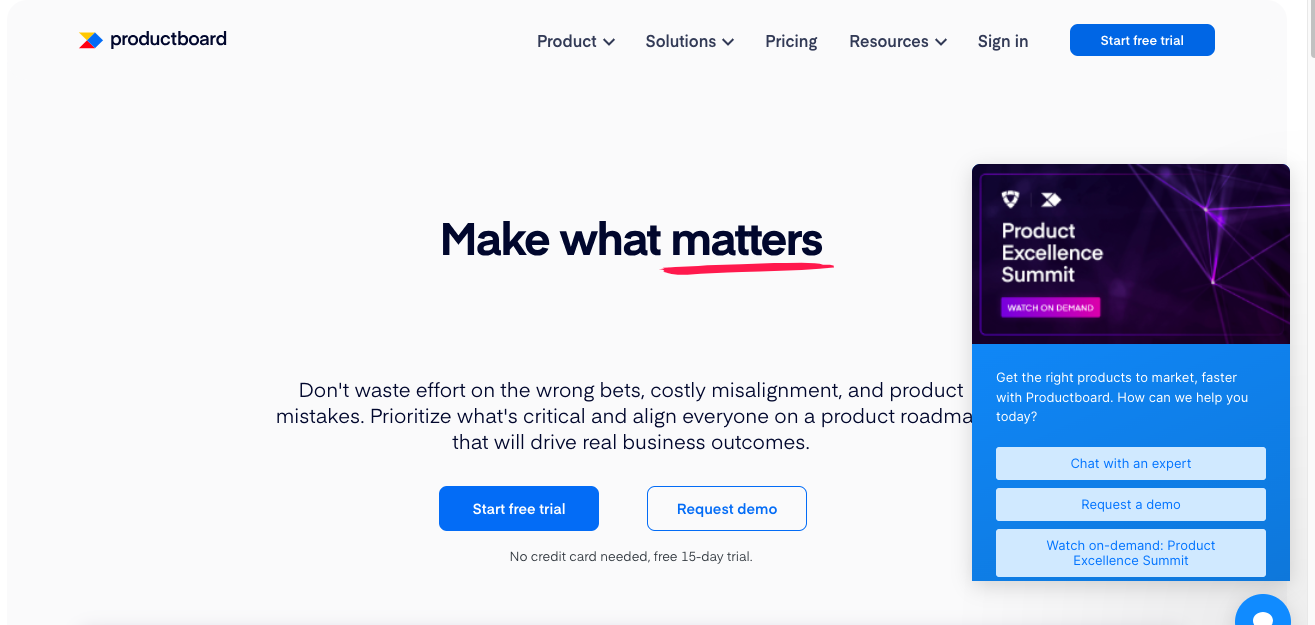 |
Pros: Productboard is good for prioritizing product features and developing a product roadmap.
Cons: Compared to the other tools in this article, the UI is a little bit confusing at first. There are also limited feedback loops with end users.
Good for: Product managers, as opposed to project managers. If you're developing a SaaS product and want to show your product roadmap to your team, this could be a helpful tool.
Spinach
Spinach is a bit like an AI project manager. It helps scrum masters prepare for their daily stand-up, takes notes, and even sends them to Slack for you.
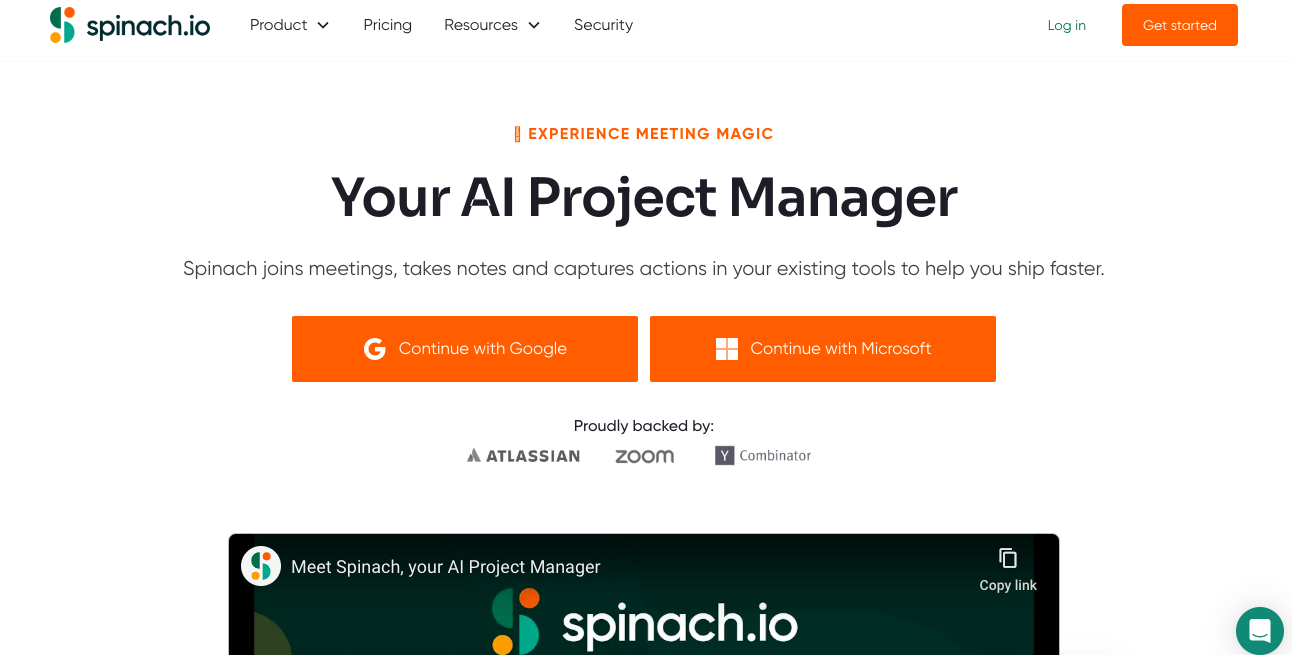 |
Pros: Spinach’s note-taking tool saves scrum managers time during meetings. This tool has many integrations, so it fits seamlessly into your tech stack and can pass data around accordingly.
Cons: Per-user, per-month pricing means that this tool is quite expensive for what it does. Additionally, the summaries of meetings it provides aren’t always accurate, especially regarding people’s names.
Good for: Per-user, per-month pricing means that this tool is quite expensive for what it does. Additionally, the summaries of meetings it provides aren't always accurate (especially people's names).
Sprint project management best practices
Communicate backlog priorities to your team
If your team members don’t know the most important tasks in a given sprint, they’re unlikely to work on exactly what you have in mind to move your project forward. So, it’s important to spell out the most important tasks and then stay in a regular dialog about those tasks during daily stand-ups.
If you’re unsure how to identify the most important tasks, there are two methods you can use to gain clarity. For both methods, you’ll need to list all the tasks that will be in the upcoming sprint.
For each task, write down how much effort it will require and how much of a reward or ROI will be gained from completing it. This is the effort/reward matrix, and your goal here is to find the tasks that produce the highest ROI from the least amount of effort or resources invested.
Alternatively, you can take a leaf from President Eisenhower’s book and use the Eisenhower matrix. To do so, you'd make a note for each task indicating how urgent and important it is. Then you'd lay out the tasks on a 2X2 matrix and prioritize accordingly
Don’t overload (or underload) your team
If you want to get the most out of your team during a sprint, it's essential to match the workload you're giving them to their capacity. Teams that are overloaded will burn out, while teams that have insufficient work will suffer from boredom.
This raises the question: how do you know how much work is too much?
The best way to understand your team's capacity is to stay in regular dialog with your team members. There's great value in weekly one-on-one meetings in which you encourage employees to speak their minds (and you listen actively). Ask them what their capacity will be over the next week or month.
If your employees are hesitant to speak honestly with you, be mindful of the fact that communication starts from the top. Strive to lead by example, and you'll often find that the people around you open up.
Map out any dependencies in advance
If you’re just starting out with project management, there might be a temptation to think that the only type of dependency is when one task can’t start until the other finishes. While it’s true that this is one type of dependency, there are several more.
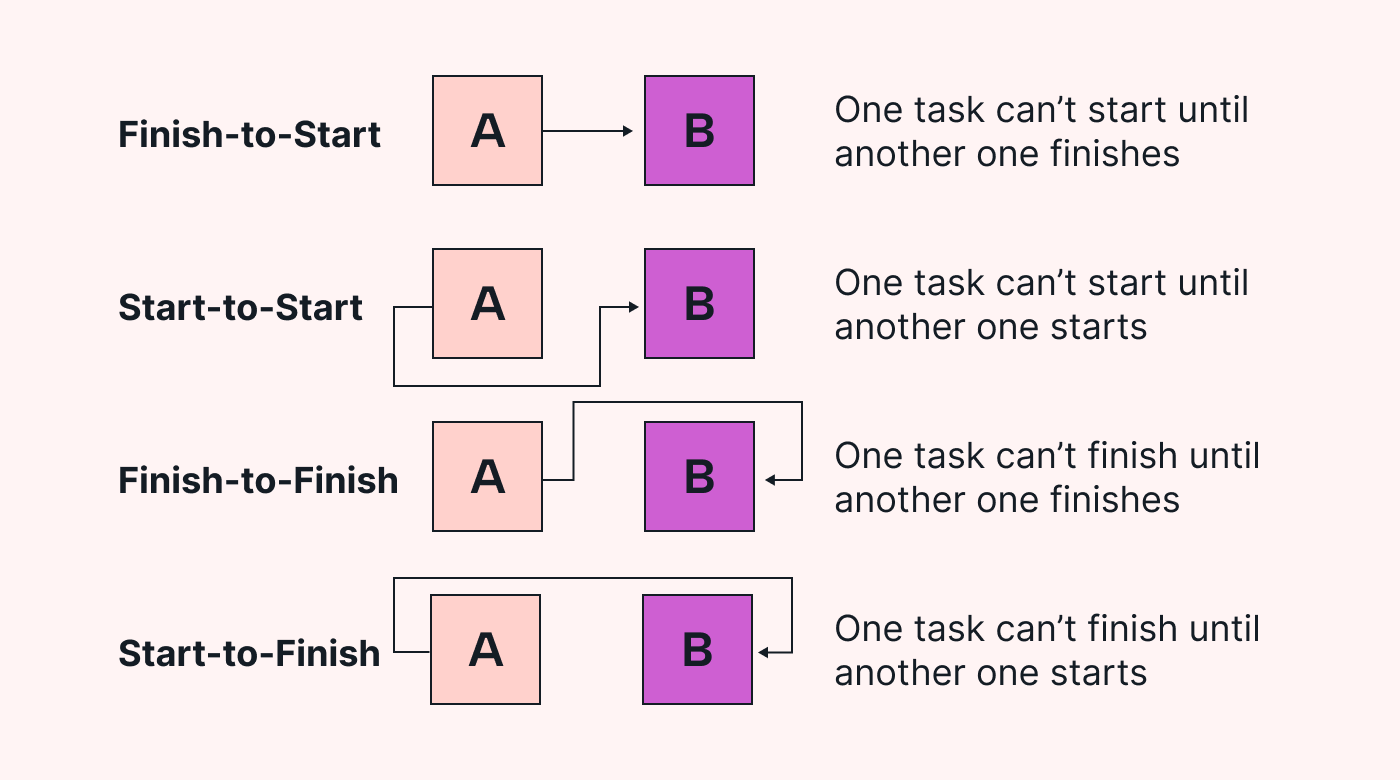 |
Dependencies can also be internal or external. An internal dependency is within your team's control, whereas an external one relates to factors that you're unable to influence. This makes external dependencies particularly challenging to manage, especially for projects that are on a tight deadline.
When creating the sprint backlog, be mindful of the dependencies in the coming sprint, and seek to eliminate them (or minimize their impact as much as possible). This will help you improve throughput.
Define success metrics
If you don’t define the metrics that matter to your project at the beginning of a sprint, you’ll have no way of knowing whether your sprint was a success. Metrics must be actionable, specific, and measurable, so think “increase in conversion rate on the home page over two weeks” instead of “improve marketing.”
The million-dollar question here is: how do you know which metrics to track?
In organizations that run sprints, 47% of teams say that they place value on whether a project was delivered to a deadline. This is by far the most popular success metric. Together with profitability and ROI, it probably warrants tracking.
Two metrics that are often underestimated are Customer Retention Rate and Lifetime Value. There's a tendency for businesses to focus on bringing in new customers, as opposed to working on keeping those they already have and increasing their lifetime spend. If that's you, you might be interested to know that it's several times cheaper to keep an existing customer than it is to acquire a new one. Food for thought!
Another metric that's often overlooked is staff turnover rate. But again, this is a crucial one: every team member who leaves amounts to wasted resources in onboarding and training.
Here’s a full list of success metrics.
Review and incorporate lessons learned
Finally, it's essential to go back over past sprints regularly and see what you can learn from your team's past successes and failures. This will lead to lessons that you can build into your sprints going forward.
Exactly how often you should do this will vary according to the size of your business, but once a quarter is a good starting point.
One great technique you can use to learn from past sprints is the "Start, Stop, Continue" method, in which you ask team members which behaviors they think should be started, stopped, or continued in the next sprint.
Alternatively, many project management tools have AI that generates reports from past sprints. Analyzing those reports will lead to insights that'll inform your future sprints.
Ready to upgrade your sprint project management?
The best way to manage sprints in your business is by getting all your ducks in a row before the sprint starts.
Suppose you’ve figured out your product backlog priorities, and you know what your team’s capacity looks like. In that case, you’ll be able to communicate precisely what you need and when – without overwhelming your employees.
If you need a tool that will help your team prioritize their tasks simply and intuitively, take a look at Motion. Get a free trial today!





